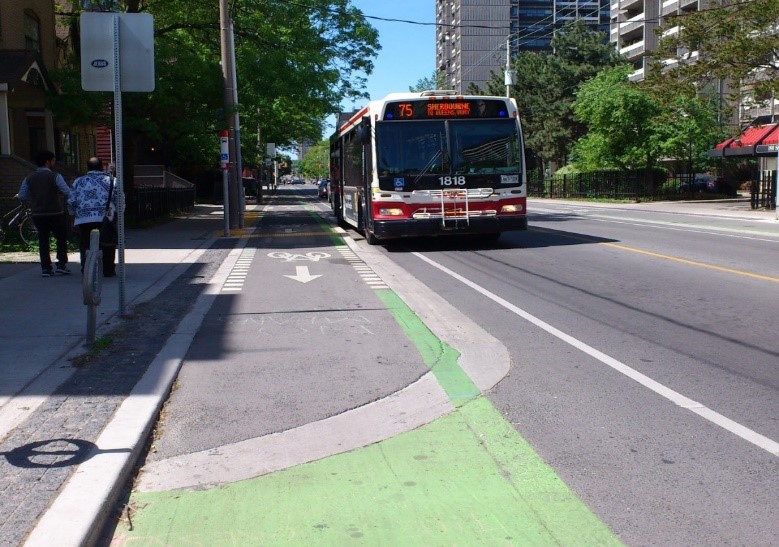Staff Report #4
June 30, 2021
To All Commissioners
Re: Cycling Infrastructure Update
Recommendation
The report be NOTED and FILED.
Background
As set out in the City of London’s Cycling Master Plan and Transportation Master Plan, the city is moving towards a fully connected, accessible cycling network that is safe for all users. As such new separated bike lanes are planned to be installed throughout the city over the coming years.
LTC administration has been working closely with civic administration on the development and installation of cycle lanes across the city both with respect to connectivity between cycling infrastructure and transit, as well as safety concerns relating to conflicts that may arise between transit riders and cyclists depending on the type of infrastructure that is installed.
Currently, 90% designs have been created for the installation of bike lanes along Brydges and Wavell between Highbury and Clarke Road. The bike lanes in this area are scheduled to begin construction in August and be completed by the end of the year. The final design for the Brydges and Wavell cycle lanes are anticipated to be used as a template for future cycle lane installations across the city.
The planned cycle lane construction will have integrated transit stops at all locations along Brydges and Wavell. With the integrated transit stop design, the cycle lane and passenger boarding area would be shared with one another similar to the design set out in figure 1 below. Similar integrated stops have been installed at Dundas and Maitland and are currently being installed along Colborne Street.
Figure 1- Integrated Transit Stop Shelborne Street Toronto

As illustrated in the diagram, the integrated stop design will see the requirement for transit riders to cross the cycle lane when boarding and alighting the bus. In addition, should the accessibility ramp be required, it would deploy directly across the cycle lane. The potential for unintended conflict between transit riders and cyclists, and concern for safety of all involved has been raised during discussions between LTC and civic administration. In the event of the accessibility ramp being deployed, safety features include a flashing light and audible warning which would alert cyclists to the potential hazard ahead; however, the process of boarding and alighting does not include any warnings. By way of example, a cyclist who sees a bus stopped but nobody waiting at the stop may assume that there is no potential for conflict; however a transit rider may be alighting from the back door, and may step directly into the path of a cyclist.
Given these concerns, a robust communications plan which outlines the expectations of all users will be critical in order to mitigate, to the extent possible, unsafe conditions for all users. With the implementation of the cycle track on Brydges and Wavell, civic administration has indicated their intent to establish a communication campaign to provide information to transit passengers and cyclists on how to safely use the integrated transit stops. The communication is expected to include the expectation that cyclists are to yield to transit passengers when there is a bus at the stop. This communication will be echoed via LTC corporate website and social media in an effort to ensure that transit riders are educated with respect to the expectations of use of this new infrastructure.
As the integrated transit stops are put into service, administration will monitor the service for any safety concerns that may need to be addressed and share same with civic administration.
Recommended by:
Shawn Wilson, Director of Operations
Katie Burns, Director of Planning
Concurred in by:
Kelly S. Paleczny, General Manager